Foods that are purple include blackberries, purple potatoes and even eggplant, all delicious choices when it comes to eating purple food in favor of an eat the rainbow diet. This purple food list is comprehensive and includes my blueberry blackberry smoothie for one example of a purple-centric food.
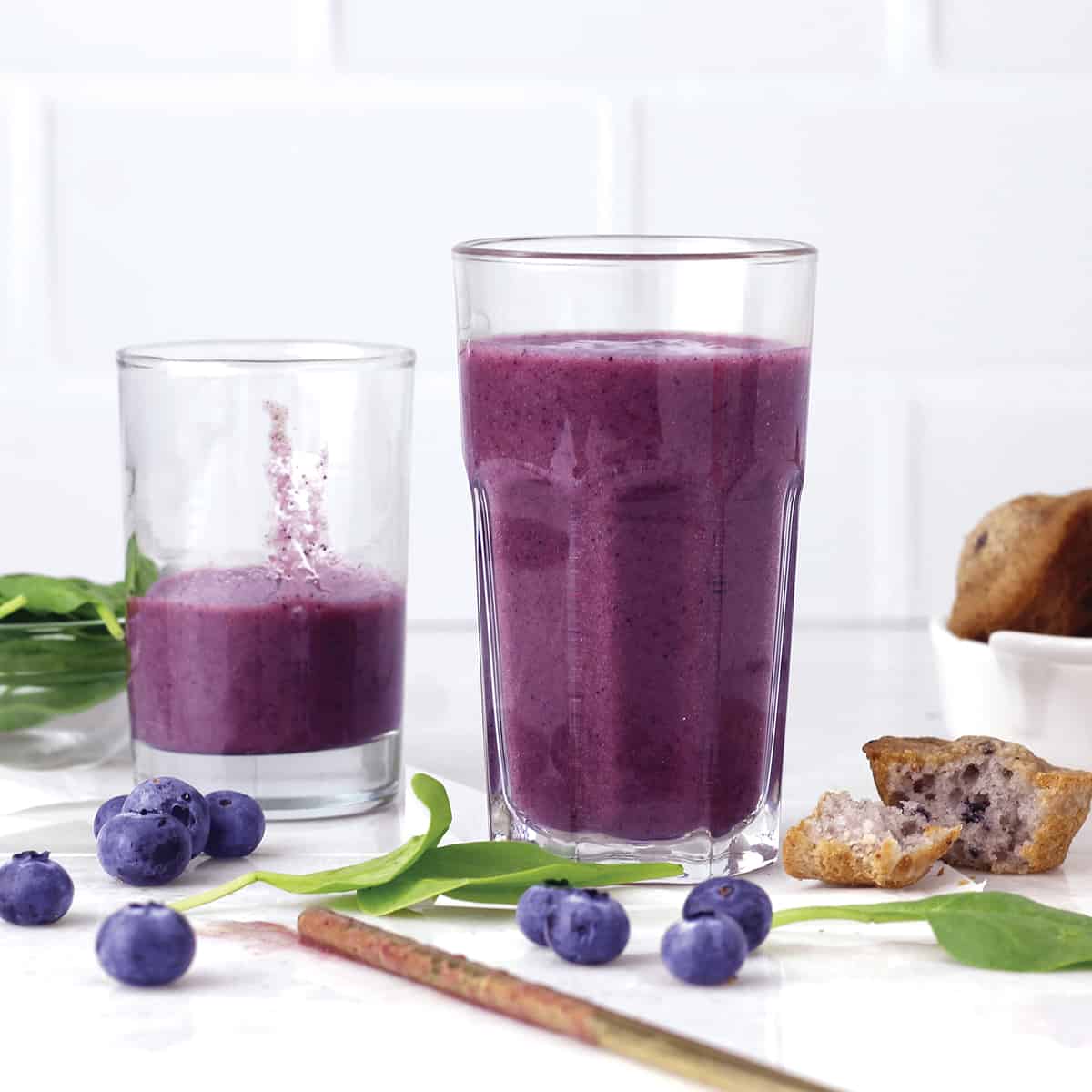
Including foods that are purple in your daily diet is a way to guarantee a rich intake of vitamin C and other vital nutrients typically found in purple-colored foods. Incorporating naturally purple foods, along with a diverse array of colors, provides nutritional advantages and promotes a balanced diet. The smoothie recipe featured at the end of this post exemplifies an ideal purple-centric dish.
Jump to:
It's easy to eat purple foods such as grapes, eggplant, black rice which is really purple and more. Purple foods, especially purple fruits and vegetables, are a great brain food, and eating purple foods daily is one way to eat the rainbow to give your body a broad array of essential nutrients. In my how to eat the rainbow post, I explain the benefits of eating red, yellow, orange, green, blue, purple and white foods each day. I also provide a free rainbow food chart that is useful inspiration.
Nutrition & Reason for Color
Eating foods that are purple are a great way to add strong antioxidants in your diet. The purple color in foods like concord grapes and purple cauliflower comes from a certain number of anthocyanins, a powerful antioxidant also found in blue foods to a stronger degree. The balance of anthocyanins in purple foods support the brain, heart and are generally anti-inflammatory.
A List of Common Purple Foods
Acai Berries
Acai berries are small and deep purple. They are known for their abundance of antioxidants, especially anthocyanins. Popular types: euterpe oleracea, acai palm.
Purple Artichokes
Artichokes are usually green but some varieties of artichokes have a purple tint. They are not as widely available as the green ones but can be found in certain regions or specialty stores.
Purple Asparagus
Purple asparagus shares a taste with the regular green or white kind but is distinguished by its vitamin C content and the presence of anthocyanins. Popular types: purple passion, sweet purple.
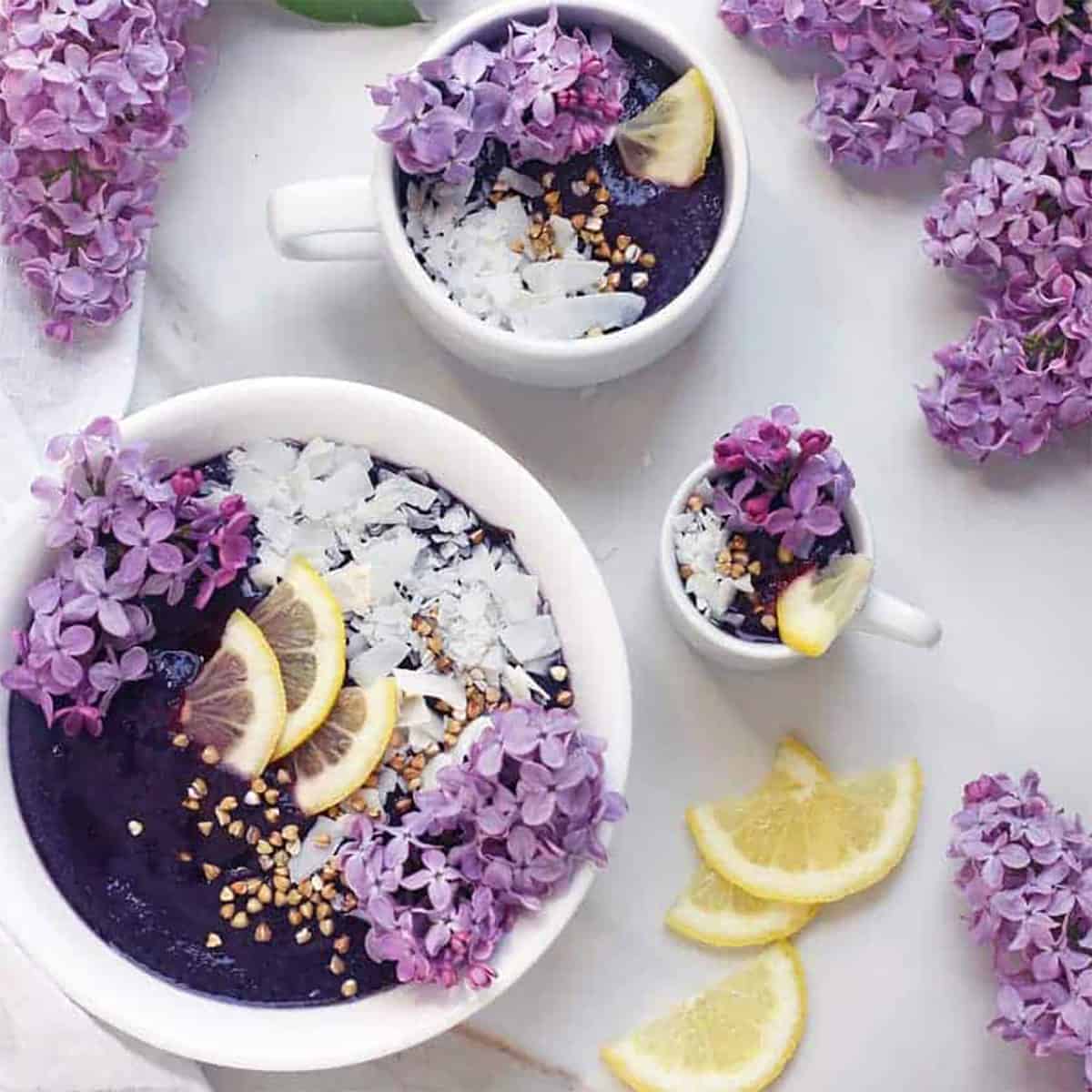
Blackberries
Blackberries contain anthocyanins, giving them a deep purple color. They are highly valued for their antioxidant properties and are more purple than other purple foods. Popular types: marionberries, boysenberries, olallieberries.
Purple Beans
While green beans are more common, there are purple bean varieties like Royal Burgundy Beans. They turn green when cooked but have a vibrant purple color when raw. Popular types: royal burgundy beans.
Purple Bell Peppers
Purple bell peppers are colorful peppers with a deep purple shade. They can be sliced and added to salads, stir-fries, or eaten raw as a snack. Rich in vitamin C and antioxidants. Popular types: purple beauty, purple blaze.
Purple Broccoli
Purple broccoli is a variety of broccoli with a purple or violet tint. It can be steamed, stir-fried, or roasted just like regular broccoli. Popular types: purple sprouting broccoli, burgundy broccoli.
Purple Brussels Sprouts
Purple brussels sprouts are a unique variety with a purple hue. They have a milder taste compared to the green ones.
Purple Corn
Purple corn is a type of corn with a deep purple hue. It can be used to make colorful corn dishes, such as purple corn tortillas or salads. Rich in anthocyanins and other antioxidants. Popular types: purple inca corn, peruvian purple corn.
Purple Cabbage
All types of cabbage offer nutritional benefits, but purple cabbage, also known as red cabbage, stands out for its anthocyanin content, enhancing its overall nutritional value. Popular varieties: red express, ruby ball.
Purple Carrots
Purple carrots are sweet and crunchy, packed with various antioxidants like anthocyanins, cinnamic acid, and chlorogenic acid. Popular varieties: purple haze, cosmic purple, dragon.
Purple Cauliflower
Purple cauliflower is recognized for its potential cancer-fighting properties. It is rich in vitamin C, fiber, potassium, and B vitamins. Popular varieties: graffiti cauliflower, purple of sicily.
Concord Grapes
Concord grapes feature thick, deep purple skin and crunchy seeds. They are loaded with anthocyanins, manganese, vitamin K, potassium, B vitamins, and vitamin C. Popular varieties: concord, niagara, catawba.
Eggplant
Eggplant is a low-calorie food with numerous antioxidants. Research on animals suggests potential cholesterol-lowering effects. Popular varieties: black beauty, japanese eggplant, rosa bianca.
👉Want to Save This Recipe?
Elderberries
Elderberries are intensely purple and are believed to support the immune system. Elderberry products like syrups and capsules are commonly used to address colds and the flu. Popular varieties: sambucus nigra, sambucus canadensis.
Purple Figs
Figs come in various colors but the black mission variety has a deep purple to black skin. They have a sweet and rich flavor.
Purple Kale
Redbor kale contains 47 plant compounds, including kaempferol, quercetin, and p-coumaric acid, offering various nutritional benefits. Popular varieties: redbor kale, scarlet kale.
Purple Kohlrabi
While kohlrabi is typically green, there are purple varieties that are less common. The purple kohlrabi has a similar taste to the green variety, a mix of broccoli and radish.
Purple Onions
Purple onions have a vibrant purple skin. They can be used in salads, salsas, or as a topping for burgers and sandwiches. Rich in antioxidants. Popular varieties: red burgundy, red zeppelin.
Purple Potatoes
Purple potatoes are like regular potatoes but have a vibrant purple color. They can be mashed, roasted, or used in any dish that calls for potatoes. They contain more antioxidants than white potatoes and are rich in various nutrients. Popular varieties: purple majesty, purple viking, vitelotte.
Plums
Plums are juicy snacks rich in vitamins A and C. Dried plums, or prunes, provide minerals such as calcium, magnesium, iron, and potassium. Popular varieties: santa rosa, damson, black beauty.
Purple Radishes
Purple radishes are a colorful variation of the common radish. They can be sliced and added to salads, pickled, or used as a garnish. Radishes, including purple ones, are low in calories and provide vitamins and minerals. Popular varieties: purple plum, amethyst.
Black Rice
This rice, often called forbidden rice, is more of a deep purple than truly black. It stands out for its anti-inflammatory properties due to a high concentration of anthocyanins. Popular varieties: thai black jasmine rice, chinese black rice.
Purple Sweet Potatoes
Purple potatoes are considered healthier than their white counterparts due to higher antioxidant content. Regular consumption may offer potential health benefits without causing weight gain. Popular varieties: okinawan sweet potato, stokes purple.
Purple Tomatoes
Purple tomatoes have a purple hue and can be used in salads, sandwiches, or as a colorful addition to various dishes. They contain anthocyanins and other beneficial compounds, along with a range of nutrients. Popular varieties: indigo rose, cherokee purple, black krim.
Other Lesser Known Purple Foods
Some purple vegetables and fruits are not very common at all but deserve a mention, including purple passion fruit, and purple corn salad, bilberries, maqui berries, and the mangosteen.
Expert tip: Processed foods dyed purple contain chemicals and preservatives thus would not be a nutritious addition to the eat a rainbow diet. These include purple energy drinks, purple skittles and M&Ms, even processed frozen purple foods.
How to Dye Foods Purple
Don't use artificial food dyes full of chemicals. Use natural foods to color your edibles instead. To make food purple, mix blue and red foods. The easiest method is to blend equal amounts of blueberries and raspberries with a few tablespoons of water and use the mixture as you would a store-bought food coloring by adding drops to batter, cookie dough, frosting, waffles, you decide! To store, freeze in ice cube trays and remove a cube to thaw in the microwave when needed.
FAQS
Blue potato, eggplant, squash, asparagus, bell pepper, brussels sprouts and cabbage among others.
Blueberries are not considered purple food, but blue. Purple berries include blackberries, bilberries, acai berries, maqui berries, and elderberries.
Be sure and visit the USDA for more detail on the nutrition make up of fruits and vegetables. And remember to run any specific medical questions by your own doctor, as well as to get confirmation that my information works for you as I am not a medical professional.
More Color Themed Foods
If you tried this recipe or any other recipe on my website, please leave a 🌟 star rating and let me know how it went in the 📝 comments below. Thanks for visiting!
📖 Recipe
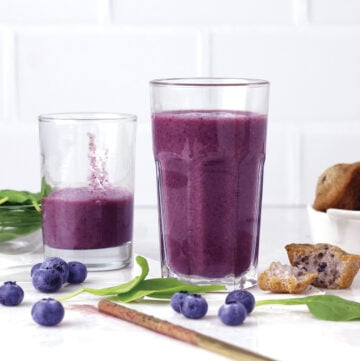
Blueberry Blackberry Smoothie
Ingredients
- ½ cup blueberries, fresh or frozen
- ½ cup blackberries, fresh or frozen
- ½ cup baby spinach leaves, packed
- ¾ cup milk
- ½ teaspoon ground cinnamon
👉Want to Save This Recipe?
Instructions
- Add all the ingredients to a blender, process until the mixture is smoothie.
- Enjoy immediately.


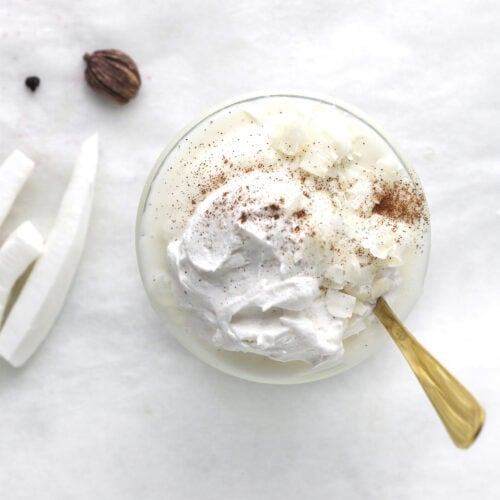
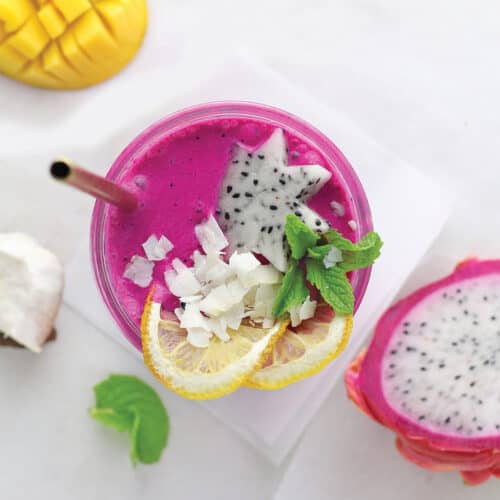

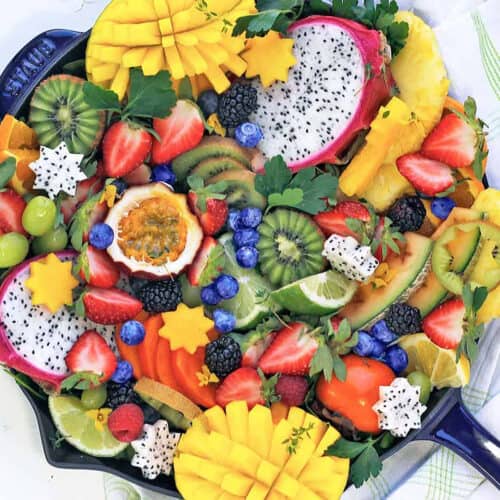

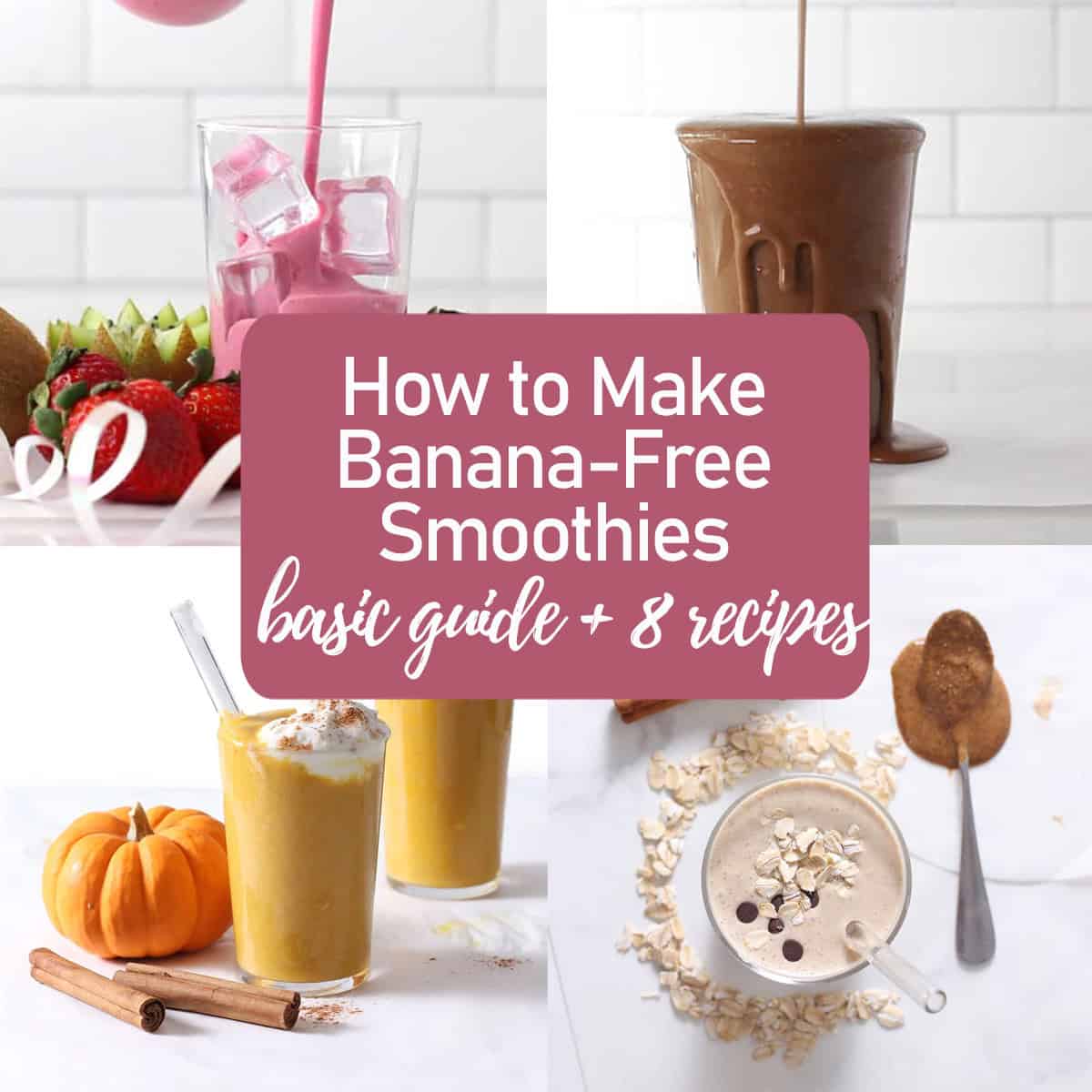
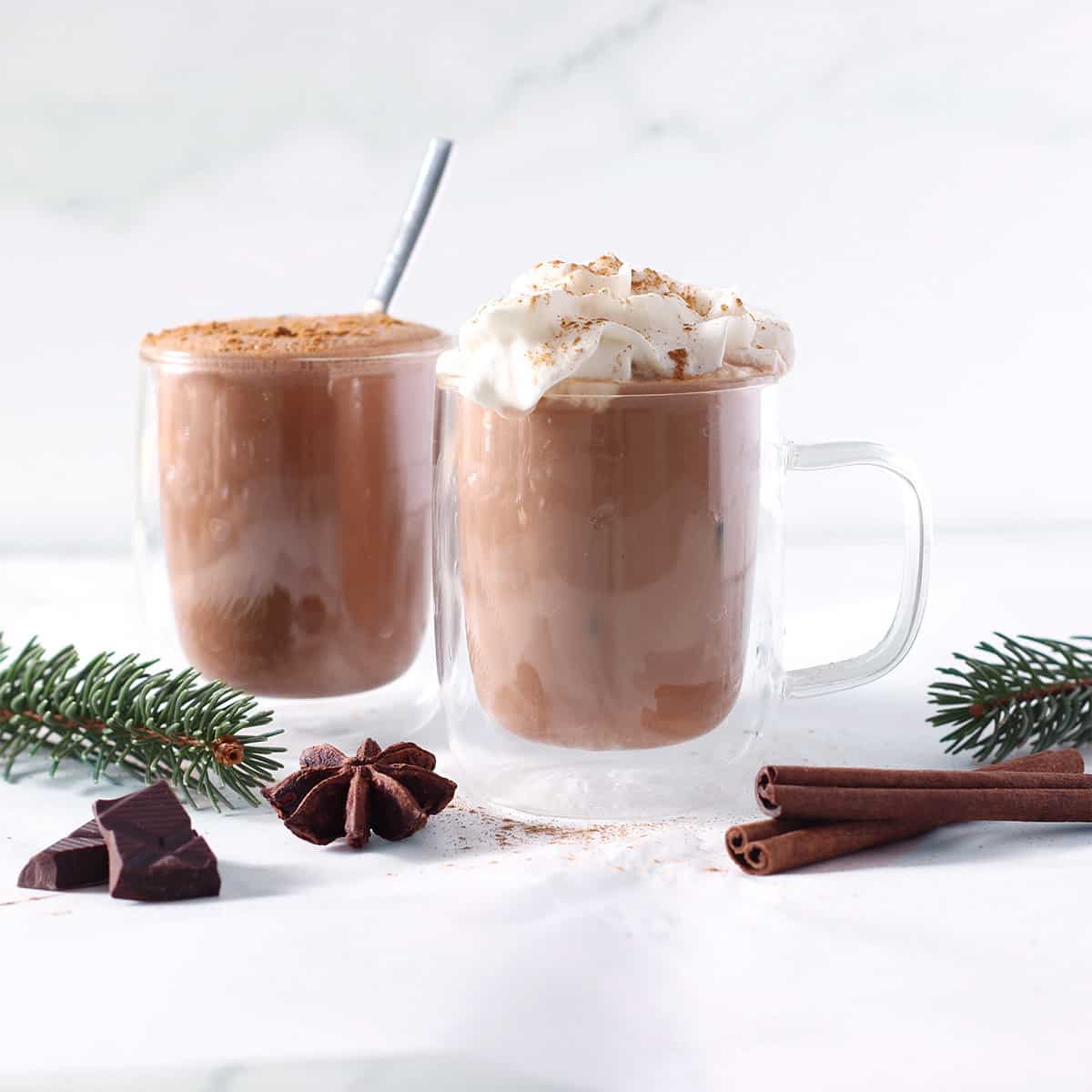

Leave a Reply